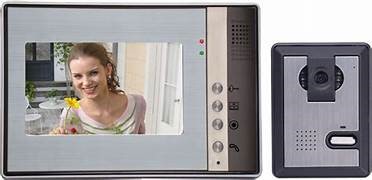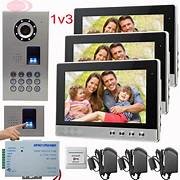Video Door Phone System
A video door phone system, also known as a video intercom or video doorbell, is a communication and security device used to identify and communicate with visitors at the front door or gate of a building, home, or property. It combines audio and video capabilities to enable real-time visual and vocal communication between the person at the door and the occupant inside. The primary components of a video door phone system typically include:
A video door phone system, also referred to as a video intercom or video doorbell, is a device used to communicate with and identify visitors at the front door or gate of a building, home, or property. It combines audio and video features that allow real-time visual and vocal communication between the person at the door and the occupant inside. The main components of a video door phone system typically include:
- Outdoor Camera Unit: The outdoor camera is usually placed near the front door or gate. It has a camera lens, a microphone, and sometimes an infrared LED for night vision. When a visitor presses the call button on the outdoor unit, the system is activated, and a signal is sent to the indoor monitor(s) inside the building.
- Indoor Monitor(s): The indoor monitor is located inside the building and serves as the receiving end of the video door phone system. It has a screen that displays the live video feed from the outdoor camera, as well as a speaker and microphone for two-way communication. Some advanced models may also have touchscreen interfaces and additional functionalities.
- Intercom Communication: The video door phone system allows for two-way audio communication between the visitor and the occupant inside the building. This feature enables the occupant to verify the visitor's identity before granting access.
- Video Feed: The outdoor camera provides a live video feed to the indoor monitor, allowing the occupant to see and visually identify the visitor. This feature enhances security by allowing occupants to assess who is at the door without physically opening it.
- Door Release Function (Optional): In certain installations, the video door phone system can be integrated with an electronic door lock. This enables the occupant to remotely release the door or gate to grant access to the visitor without physically opening it.
- Night Vision: Many video door phone systems are equipped with infrared (IR) LEDs or other night vision technology to ensure clear visibility in low-light or nighttime conditions.
- Expandability and Integration: Some video door phone systems offer additional features such as integration with home automation systems, mobile app connectivity, and support for multiple indoor monitors to cover different areas of the building.
Benefits of a video door phone system:
- Enhanced Security: The ability to visually identify visitors before granting access enhances security and helps prevent unauthorized entry.
- Convenience: Occupants can communicate with visitors without having to physically go to the door, making it more convenient, especially for larger properties.
- Remote Access: Some advanced systems allow remote access through mobile apps, enabling occupants to communicate with visitors even when they are not at home.
- Deterrent for Intruders: The presence of a video door phone system can act as a deterrent for potential intruders or burglars.
- Monitoring: The video doorbell can also serve as a surveillance camera, recording video footage of visitors or any suspicious activity.
Video door phone systems come in various models and configurations to suit different needs and budgets. Before purchasing, it's essential to consider factors like camera resolution, connectivity options, and any additional features that may be required for your specific use case.


